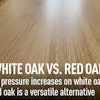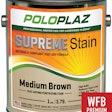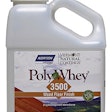ANSI is short for the American National Standards Institute and is often mixed up with the subject of last week’s blog, ASTM. It has also become something of a generic term for a standard.
The ANS Institute is a slightly younger group, having been founded just shy of 100 years ago in 1918 as the American Engineering Standards Committee. What’s interesting about ANSI is that it is an accreditation body, which means it supervises standard-creating agencies like ASTM International. They determine that ASTM International and other organizations are competent to develop standards. They are “the watcher that watches the watchers.”
It gets confusing, because although ANSI itself does not develop testing standards themselves, there are standards identified as ANSI standards.
It gets confusing, because although ANSI itself does not develop testing standards themselves, there are standards identified as ANSI standards. Those are ones that have been developed under a program accredited by ANSI (like ASTM). Some standards will be called an ASTM while others might be an ANSI/ASTM and a few are just called ANSI. Generally ANSI standards establish a grouping of other types of standards (like ASTM ones) that provide a complete product evaluation system. Confused?
Yeah, I know. It’s a lot of use of the word “standard.” Maybe this helps—the explanation I was given to help distinguish the two groups was:
• When you want to perform a test and need to know HOW to do it, look for the ASTM standard
• When you want to know WHAT minimum performance requirements are for a particular product, look to an ANSI standard for that definition.
For example, the flooring industry uses more and more MDF these days. There is an ANSI standard that defines performance requirements for MDF (if you’re curious, it is ANSI A208.2-2009). The requirements cover many things, including meeting a specified “Water Absorption and Thickness Swelling” condition, something very important to the flooring industry. So we can specify an ANSI for our MDF, which will then reference the appropriate ASTM for water absorption as well as other conditions.
Specifically, the ANSI standard for MDF references different ASTM methods for testing panels for physical properties and formaldehyde, as well as an ISO/IEC guide for how to draft standards to assess conformity, PLUS the California Air Resources Board (CARB) regulations on formaldehyde emissions (and of course this regulation also references the ASTM methods for formaldehyde test methods and provides the regulatory basis for the levels specified in the ANSI standard). (Yes it can get a bit circular. Last year I found a section of a proposed CARB amendment that I swear went full circle where Definition A was based on using Definition B which was based on Definition C which went back to Definition A for its foundation.)
But the bottom line is that the ASTM methods put meaning to the numbers by specifying how the tests are to be run so two people running the test at two different locations can compare and make judgments about the results. The ANSI product standard says that if you meet the specified ASTM testing requirements, your product is qualified for use under the conditions of that ANSI standard.
There are over 200 standard-setting organizations accredited by ANSI, some specific to setting standards within an industry, or others like ASTM or ISO that are more broadly focused. It is common to have standards cross-pollinate amongst organizations. ISO, another standard organization, will sometimes cross over with an ASTM or an ANSI, and any of these might cross over with an international standard like a DIN (German) or a BSI (British) or a JAS (Japan). I found some standards with three or four associations tagging them.
If you are confused, that’s my fault. If you feel enlightened at all, please thank my friends at Hexion for their help in working through the differences between ASTM and ANSI and the rest. They also provided some of the specific examples I used in these past two blogs. Hexion is a great supporter of the wood industry, and over the years, many of their staff have spent a tremendous amount of time attempting to educate me on all sorts of issues. (Any and all mistakes made in the past or in blogs to come are due to my thick head, not any failure on their part.) As usual, the staff has declined to be credited publicly, so let me just salute the company—if not the individuals by name—since it’s their corporate culture that encourages such industry support.
Next week, one more look at standards and using them in marketing material.
































